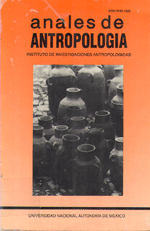Una técnica geométrica para la orientación del cráneo derivada del sistema vestibular
Main Article Content
Abstract
In the work field it was compared the obtained results through the application of two different vestibular (vestibule of the inner ear) techniques, the computerized tomography and the geometrical one, with the Purpose to confirm the accuracy of the latter one which requires a minimum of equjpment for its application. Both techniques are used in the analysis of the dynamics for the neurocranium (part of the skull which encloses and protects the brain), and its relation with the spienocranium (the largest endocrine gland). A comparative analysis was done in 80 craniums; 20 of them with no deformation whatsoever, coming from the Paraná river delta region; 20 with an annular-shaped deformation, pertaining to mernbers of the "aymaras" tribe; 20 with a straight tube-shaped deformation, from people of the "patagonians" tribes from diverse origins; and 20 with slanted tubeshaped deformation, coming from different sites in the Argentinian Northeast side. Results from the comparative analysis on the mentioned techniques let the confirmation of a high relation among them; thus the reliability on results obtained in the use of geometrical techniques. In this way, among other aspects derives from its use, it is remarkable the form and dimension of the equi-probability ellipse, as proper indicators in the moving experienced by spots at the cranium when this is turned on different deformatory practices; on the other hand, it is confirmed the influence on deformations both of the slanted and annular tube-shaped type at the neurocraniüm over the facial metric variances.
Downloads
Download data is not yet available.
Article Details
How to Cite
Marcelino, A. J. (2010). Una técnica geométrica para la orientación del cráneo derivada del sistema vestibular. Annals of Anthropology, 27(1). https://doi.org/10.22201/iia.24486221e.1990.1.15724
Esta revista usa una licencia CC del tipo CC BY-NC-ND 3.0. Se maneja bajo el esquema de acceso abierto, con una licencia Creative Commons Attribution-NonCommercial-NoDerivs 3.0 Unported.
